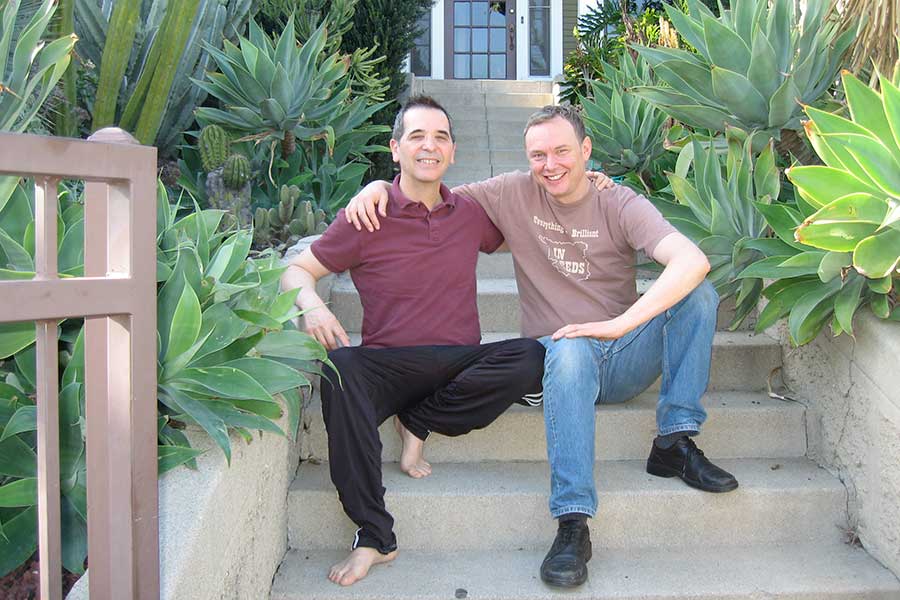In “Still Alice” — writer/directors (and real-life couple) Richard Glatzer and Wash Westmoreland’s beautiful, intelligent adaptation of Lisa Genova’s novel — Alice (Julianne Moore) is a Columbia University linguistics professor who experiences the symptoms of early-onset Alzheimer’s. This compelling, moving drama shows the effect the disease has on her and her family.
“Still Alice” is all about loss and control as the title character slips in and out of stages where she has difficulty remembering things — be it a word, a name or a dinner engagement — and the film shows how she tries to keep it together under such pressure. Glatzer and Westmoreland never milk her situation for pathos, and they coax an extraordinary performance from Moore. Her expressions as she grapples with her condition are absolutely heartbreaking.
In an email exchange, Westmoreland responded to questions about “Still Alice.”
PGN: I understand this film resonates with both you and Richard. Can you discuss your experiences and how they are reflected in “Still Alice”?
WW: Richard developed a slight lisp about four years ago and was told he probably had bulbar ALS. The life expectancy for this is between 18 months and four years. Richard is not only beating the odds, but he has directed two feature films in this time. He’s determined to keep going. We don’t talk much about next year or the year after — we just live day by day. Adapting “Still Alice” helped us work through some of our own issues — both in terms of living with the disease and caregiving. The speech Alice gives at the Alzheimer’s Association later on in the movie largely comes from Richard’s experiences.
PGN: Your early films have had significant queer characters, plot or subplots. With “Still Alice” and your previous film, “The Last Days of Robin Hood,” you have made “women’s pictures.” Can you talk about this shift in your work?
WW: We are always primarily driven by the story and have projects on our docket with gay, straight, male and female protagonists. There is a great tradition — from Cukor to Fassbinder to Todd Haynes — of gay filmmakers having a strong connection to female protagonists. I guess there’s a certain sense of empathy and exclusion from heterosexual patriarchy. We certainly had no problem identifying with Alice and working the entire story through her point of view.
PGN: Visually, you convey the theme of loss, the triggers of memory and the fog of what is happening to Alice through out-of-focus shots and “home movies.” Can you discuss your visual approach?
WW: As Alice’s short-term memory deteriorates, she starts to live more in her distant memories. This is very common with people living with Alzheimer’s — the further back the recollection, the easier it is to hold on to. To show this, we used little shards of Super-8 of Alice’s childhood weaving in with her daily routine. Super-8 films were a big part of my childhood. When I remember something, I sometimes wonder if I’m remembering the event itself, or seeing it on Super-8. They have the same hazy texture in my mind.
PGN: Every scene — Alice speaking, cooking or running — is freighted with the danger that she may forget what she is doing, or even harm herself or others. Can you talk about how you created this narrative tension?
WW: We realized that the potential for memory loss leading to socially embarrassing situations or physical danger was a powerful source of suspense. Whenever Alice is doing something — whether it is giving a lecture, visiting the doctor or cooking Christmas dinner — the audience is consciously willing her to pull it off. In the end, it seems like she escapes social embarrassment but then something unexpected happens. In this way, it functions like a horror movie; the hand comes up out of the grave and grabs you.
PGN: There are powerful themes of shame, security, struggle and suffering reverberated throughout the film. Can you discuss that?
WW: Alice says, “I’m so ashamed,” indicating the social perceptions of the disease. There is still something about Alzheimer’s that people feel embarrassed about. HIV/AIDS is also relevant here, demonstrating how the perception of a disease can be changed through social activism. What Alzheimer’s really needs is a similar sea change in the way the disease is perceived. We hope that “Still Alice” is a story that can get people to understand the disease more intimately.
PGN: How did you work with Julianne Moore on the role?
WW: We divided Alice’s deterioration into four main phases, but Julianne did such a nuanced portrayal it seemed more like 400 phases. Julianne was so committed. She did so much research — in terms of visiting support groups and making friends in the Alzheimer’s community — to make sure everything she did was 100-percent real. This took away our main fear — a phony note — and created something that was authentic and relevant.

